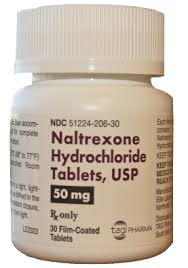The most common uses for opiate antagonists are in detox methods for opiate abuse and addiction or to reverse opiate overdoses. Because of their high affinity to bind to the numerous opioid receptor sites in the brain and spinal cord, opiate antagonists have been studied for uses in other medical treatments as well.
What are Opiate Antagonists?
The simplest way to describe an opiate antagonist is that it works differently and sometimes, the opposite, of an opiate agonist. An opiate agonist is a chemical that is able to bind to opiate receptors in the brain and activate them such as morphine and other opiates.
Each receptor has a special function that, when activated, elicits a biological response by releasing endorphins, or neurotransmitters, that communicate messages to activate, suppress, or help to regulate physiological process throughout the rest of the brain and body. According to NIDA, “A neurotransmitter and its receptor operate like a “key and lock,” an exquisitely specific mechanism that ensures that each receptor will forward the appropriate message only after interacting with the right kind of neurotransmitter.”
An opiate antagonist is a chemical that searches out opiate receptors to cover and bind to, filling in the gaps of the receptor openings, displacing any opiates currently occupying the receptors, and building a protective wall around them to block the binding of other opiates and subsequently their effects. However, although opiate antagonists can bind to and occupy the opiate receptors, they do not activate them.
Opiate Antagonists Used in Opioid Addiction Treatment

Naltrexone is one of the more common opiate antagonist medications.
There are many different opiate antagonist medications. naloxone and naltrexone are competitive antagonists and two of the most commonly prescribed medications for the treatment of opiate addictions.
Competitive agonists are non selective and have a higher affinity for binding to all of the opioid receptors over other opioids. If a person is under opioid intoxication or overdosing on opioids, the competitive antagonists can also displace the opioids present and reverse their effects. The receptors most affected by opiate agonists include:
- The mu opioid receptors, when activated by an opioid agonist, produce the most common opioid effects including analgesia, euphoria, sedation, decreased respiration, constipation, reduced blood pressure, and impaired thinking and balance. When an opioid agonist binds to the mu opioid receptors in the prefrontal cortex of the brain, it contributes to the person’s decisions regarding the drug’s importance and addictive behaviors after adaptations.
- Delta opioid receptors which can cause seizures at high doses of an opioid agonist.
- Kappa opioid receptors which alter perceptions or pain, mood, consciousness, and motor control.
Selective Opioid Antagonists
With the advancement of science, selective opioid antagonists have been developed to target, specifically, one of the opioid receptors without the others. Studies have shown effectiveness in selective opioid antagonists used in the treatments of constipation, depersonalization disorders, and alcohol dependence.
Naloxone
Naloxone has a low oral bioavailability which means that taken orally, it has a slower onset of action and effects, but, it is has a fast onset of action following parenteral (IV) administration which makes it very useful in reversing opioid overdoses and for use in rapid opioid detox treatments. Its short duration of effects, however, make it unreasonable to use in opioid deterrence or maintenance therapies. Naloxone brands include Narcan, Narcaine, and Narcotan.
Narcan
According to the Substance Abuse and Mental Health Services Administration, “medical personnel, health care professionals, and patients increasingly are being trained in the use of the opioid antagonist naloxone hydrochloride (naloxone or Narcan), which is the treatment of choice to reverse the potentially fatal respiratory depression caused by opioid overdose. ”
Narcan is a naloxone solution that is advocated for use in community-based programs that offer opioid overdose prevention services to people who use drugs, their families and friends, and medical providers.
Narcaine
Narcaine is another naloxone medication that is advocated in community-based programs for opoioid overdose preventions. It can be carried in single dose administrations that create a mist to be delivered via nasal passages.
Buprenorphine/Naloxone Combinations
Naloxone is also used in combination with buprenorphine, a partial opioid agonist, in sublingual and pill medications like Suboxone, for opioid detox and maintenance therapies. Buprenorphine activates opioid receptors to a lesser degree than a full agonist, and is used to reduce the cravings and withdrawals from other opioids, but, also has an abuse liability. Naloxone is added to deter IV use of these medications. When administered orally, the naloxone does little to interfere with the buprenorphine effects, but, if the person tries to inject the drug, it will cause immediate antagonist actions and the person will go into withdrawals.
Naltrexone
Naltrexone is orally effective and has a long duration of action which makes it useful in detox treatments and for deterring abuse in opioid maintenance therapies. A derivative of naltrexone, Nalmefene, is a selective opioid agonist that specifically targets the mu opioid receptors and can suppress opioid tolerance and can be used to reverse opioid effects. Other brand names include Vivitrex and Vivitrol.
Ongoing Studies
There have been several ongoing studies that may prove opioid antagonists drugs even more useful in the future. There are direct correlations between opioid receptors and the regulations of many physiological functions that spur the research into these possibilities.
Studies have shown naltrexone may reduce smoking for those who are heavy drinkers, although it has little effect on those who are not. Suicidal and self harm behaviors continue to plague society and there are ongoing studies that have shown some opioid antagonist treatments may be helpful for these conditions also.








